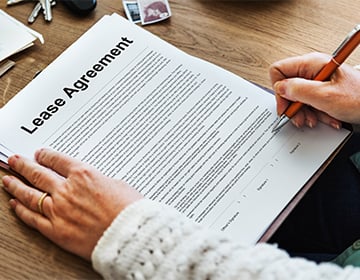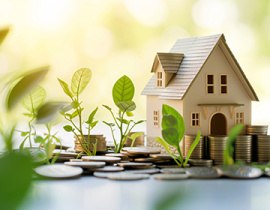- Home
- Blog
- Tips & Advice
- What to Know Before Investing in Commercial Real Estate Properties
What to Know Before Investing in Commercial Real Estate Properties
Before you invest in commercial real estate, it’s important to understand the key areas that affect your returns. When you make a commercial property investment, you need to think about how lease terms, tenant quality, and property types influence income. Tax benefits and lease structures can also impact how much you keep after expenses. It’s just as important to plan for your upfront and ongoing costs so you’re not caught off guard. Lastly, the market can shift quickly, so knowing how to manage risks and choose the right location for investing in commercial property gives you a better chance at long-term success.
The Importance of Lease Terms in Commercial Real Estate
 Long-term leases in commercial real estate often provide more stable income than short-term leases. A lease that lasts 5 to 10 years gives you a steady stream of rent over a long time, allowing for better planning of your returns. These leases often include rent increases every few years, which helps protect your income against inflation. While shorter leases, lasting only 1 to 3 years, may offer higher rental rates, they come with higher turnover and more risk. You might need to find new tenants more often, creating income gaps and added costs, which can complicate your commercial real estate investing strategy.
Long-term leases in commercial real estate often provide more stable income than short-term leases. A lease that lasts 5 to 10 years gives you a steady stream of rent over a long time, allowing for better planning of your returns. These leases often include rent increases every few years, which helps protect your income against inflation. While shorter leases, lasting only 1 to 3 years, may offer higher rental rates, they come with higher turnover and more risk. You might need to find new tenants more often, creating income gaps and added costs, which can complicate your commercial real estate investing strategy.
The quality of your tenants plays a significant role in how consistent your cash flow is. Tenants with strong credit ratings, such as large companies or investment-grade firms, are more likely to pay rent on time and stay for the full term. These tenants provide greater income security, reducing the risk of default. On the other hand, renting to smaller businesses or startups might offer higher rent, but the risk of missed payments or early move-outs is greater. Choosing the right tenant can mean the difference between steady income and financial stress in your commercial real estate investment.
Different property types experience varying levels of demand in the market, which is crucial for commercial real estate analysis and investments. Currently, industrial spaces are in high demand, especially as e-commerce continues to grow. These spaces are essential for storage and shipping, leading to increased demand from logistics companies. Retail properties also perform well, but limited new construction keeps vacancy rates low and rents high. Office space is slowly recovering as businesses adjust to remote work, although vacancy levels remain elevated.
Rental yields vary depending on the type of commercial property, which is an important consideration in your commercial real estate investment strategies. Here's a simple comparison of types:
- Industrial: Average yield is 4.6%–6.0%; Strong demand from logistics companies.
- Office: Average yield is 4.0%–7.0%; recovery underway, hybrid work impact.
- Retail: Average yield is 5.0%–8.0%; Tight supply but higher operational risk.
Industrial properties often have the lowest risk and stable yields, which makes them a solid choice for commercial real estate investment. Retail properties offer the highest returns but come with more uncertainty. Office buildings fall in between, providing steady but cautious growth.
Tax Benefits and Deductions for Commercial Property Owners
 Commercial property owners have access to several tax deductions that can significantly reduce how much tax they owe each year. One of the essential commercial real estate investment tips is to take advantage of mortgage interest deductions, which can be particularly helpful if you’ve borrowed money to buy or improve your property. Additionally, operating expenses such as maintenance, insurance, property taxes, and utility bills are deductible, and these costs can accumulate quickly. If you hire professionals like lawyers, accountants, or property managers, their fees are also deductible. Furthermore, owners who invest in energy-saving upgrades, such as better lighting or HVAC systems, can benefit from special deductions that increase based on the energy savings achieved.
Commercial property owners have access to several tax deductions that can significantly reduce how much tax they owe each year. One of the essential commercial real estate investment tips is to take advantage of mortgage interest deductions, which can be particularly helpful if you’ve borrowed money to buy or improve your property. Additionally, operating expenses such as maintenance, insurance, property taxes, and utility bills are deductible, and these costs can accumulate quickly. If you hire professionals like lawyers, accountants, or property managers, their fees are also deductible. Furthermore, owners who invest in energy-saving upgrades, such as better lighting or HVAC systems, can benefit from special deductions that increase based on the energy savings achieved.
Understanding lease structures is crucial for effective commercial real estate investment analysis. Lease agreements can significantly impact your income and control over expenses. In a gross lease, the tenant pays a single flat amount, while you cover most or all property costs, including maintenance and taxes. This arrangement simplifies things for the tenant, but it places the financial risk on you if expenses rise. On the other hand, net leases require the tenant to pay base rent plus additional costs. In a triple net lease, the tenant is responsible for nearly all expenses, taxes, insurance, and upkeep, resulting in more predictable income for you. These lease structures can significantly influence your commercial property return on investment.
Depreciation is another effective strategy for reducing taxes in commercial real estate. You can spread the value of your building (excluding the land) over 39 years and deduct a portion of that value each year. These deductions represent paper losses, allowing you to collect rent while lowering your tax bill. Certain components of the property, such as carpets or equipment, can be depreciated more quickly using cost segregation, leading to greater deductions in the early years of ownership. In some jurisdictions, bonus depreciation allows for the immediate deduction of significant costs. However, it’s important to remember that when you sell the property, the tax savings you realized may need to be repaid through depreciation recapture.
By implementing these commercial property investment tips, you can enhance your overall commercial real estate returns and make informed decisions that contribute to your long-term success in the market.
Hidden Costs of Owning Commercial Property
.jpg) Buying commercial property requires a large upfront investment. The down payment is usually 20% to 35% of the purchase price, which means for a $1 million property, you may need:
Buying commercial property requires a large upfront investment. The down payment is usually 20% to 35% of the purchase price, which means for a $1 million property, you may need:
- $200,000 to $350,000 for the down payment
- $30,000 to $60,000 in closing costs (3% to 6% of the price), covering things like legal fees, title insurance, and appraisals
- $50,000 to $200,000 for renovations and property improvements (10% to 20% of the price)
- $25,000 to $75,000 to set up property operations (staffing, systems, and licenses)
- 5% to 10% of property value as working capital during early operations or lease-up period
These early costs can add up quickly, so careful budgeting is key if your goal is passive income from commercial property. Without a strong financial plan, the property may underperform before it even starts generating steady returns.
Once you own the property, the expenses don’t stop. You’ll need to pay for property management, which usually costs 4% to 12% of your monthly rent. Maintenance can be expensive too, especially for older buildings. Expect:
- 1% to 3% of the property’s value per year for general maintenance and repairs
- 1% to 2% annually for capital improvements like roof replacement or HVAC systems
- $1,000 to $3,000 per year for insurance on small properties; much higher for larger ones
- $2,726 average monthly insurance premium in 2023, projected to rise to $4,890 by 2030
- 10% to 30% of rental income for utilities if owner-paid
- 1% to 3% of assessed property value annually for property taxes
Lease structure matters triple net leases (NNN) shift most of these costs to tenants, while gross leases keep them on you. Choosing the right structure is essential for maximizing ROI in commercial property over time.
The way you finance the property affects how profitable your investment is. Banks offer long-term loans with good rates, but they have strict rules and take time to approve. SBA loans let you borrow with less money down, but they only work for properties you plan to use for your own business. Other options like bridge loans or hard money loans are faster, but they charge higher interest and are meant for short terms. Private lenders offer flexible terms but also cost more.
Your financing choice directly affects your monthly payments, return on investment, and commercial property investment risks. Matching the loan type to your goals increases your chance of a solid long-term return on real estate investment.
Understanding Market Risks in Commercial Real Estate Investments
 Market risks can affect your income and property value, especially during economic downturns. One of the biggest risks of investing in commercial real estate is how quickly market conditions can shift. When the economy slows down, businesses may cut back, and tenants might leave, leading to higher vacancy and lower rent. These are just a few of the economic risks in commercial property that investors need to monitor closely.
Market risks can affect your income and property value, especially during economic downturns. One of the biggest risks of investing in commercial real estate is how quickly market conditions can shift. When the economy slows down, businesses may cut back, and tenants might leave, leading to higher vacancy and lower rent. These are just a few of the economic risks in commercial property that investors need to monitor closely.
Some sectors, like office buildings, are particularly vulnerable because fewer people are working in traditional spaces. Rising interest rates can also impact returns by increasing borrowing costs and squeezing profit margins. If demand falls but supply stays high, it becomes harder to keep your property full or charge competitive rates. These factors can quickly decrease commercial property value, which makes it essential to stay informed and plan for market changes.
A property in a strong area with job growth, good schools, and busy roads is more likely to retain tenants and see steady increases in commercial real estate values. On the other hand, if the area relies heavily on a single industry or employer, you face added exposure if that company shuts down or relocates.
You can lower your risk by using smart strategies that protect your investment over time. One proven approach is diversification, owning different types of properties in various markets, so you're not tied to a single region or sector. Maintaining strong insurance coverage can help protect against damage, liability, or lost income. Selecting tenants from multiple industries and staggering lease terms keeps your cash flow stable.
Working with a reliable and experienced real estate company can also reduce the risks by helping you navigate volatile conditions, screen tenants effectively, and manage daily operations.






